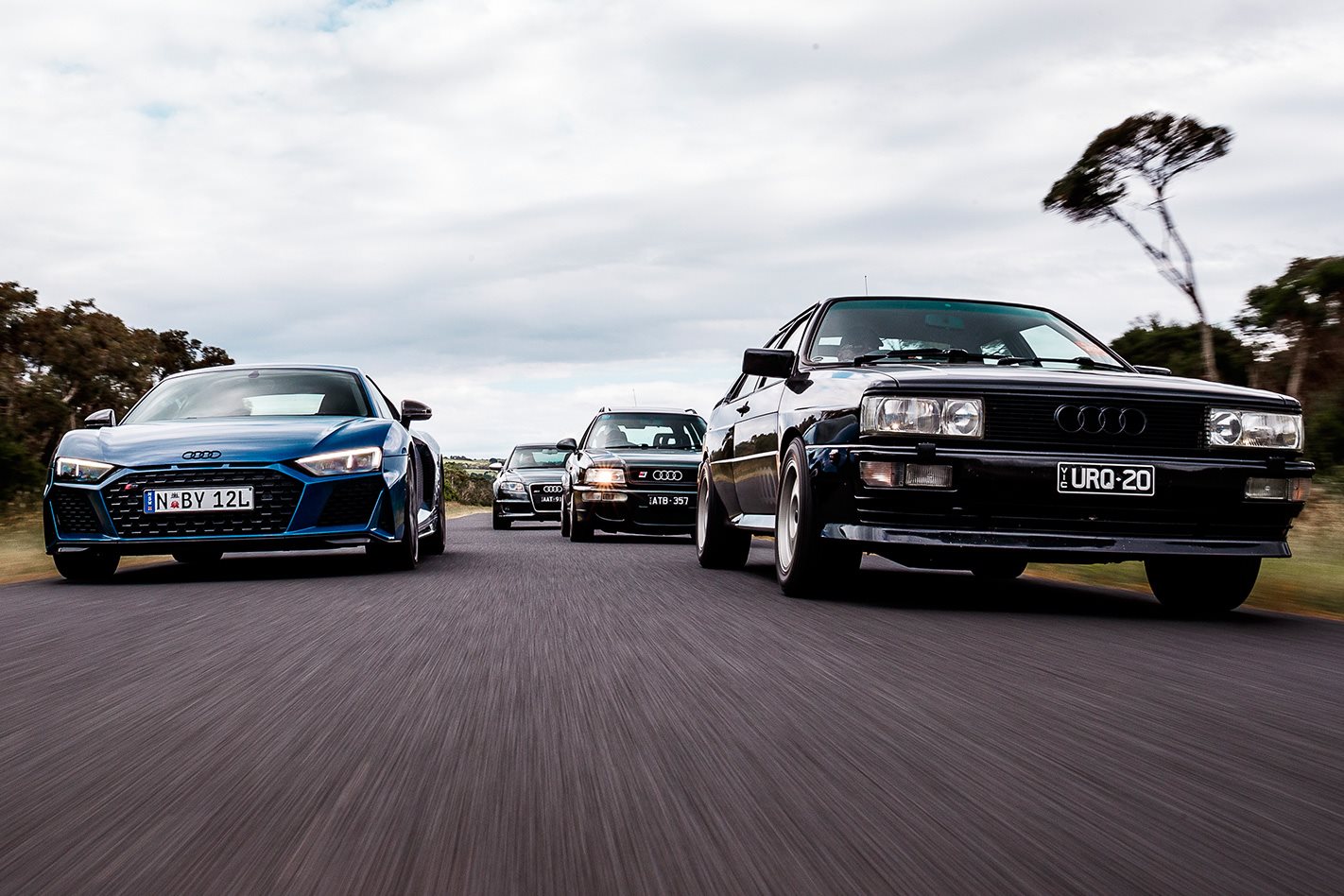THIS ALL started with the Audi A1. It was red, with an Audi 80 body, the 200’s five-cylinder turbo engine and the all-wheel drive guts of Volkswagen’s Iltis off-roader.
Audi engineer Roland Gumpert had convinced his boss, Jörg Bensinger that the Iltis’ all-weather capabilities would translate to production cars, and Bensinger, in turn, phoned engineering head Ferdinand Piëch to sell him the benefits. The rest is history. The car that changed the world nearly wasn’t called the quattro. That name was the idea of another Audi engineer, Walter Treser, after the previously preferred name, CARAT, for Coupe-All-Rad-Antrieb-Turbo was owned by a perfume manufacturer.
Quattro: the untold story by Peter Robinson
Yet the car before us here is, and only ever could be the quattro. Lower case. Mononymous. Designer Martin Smith’s work has worn the years lightly, the blistered wheel arches and quad ring door decals creating an iconic design language. The quattro font that tracks through the heated rear window element has endured across four decades. This is the last of the ur-quattros, one of only two 20v models that found their way to Australia via personal import. Introduced in 1989, the 20v featured the Torsen centre diff, which can apportion up to 75per cent of torque to the axle that can best deploy it. This is a 1990 car, but perhaps we can overlook that detail.
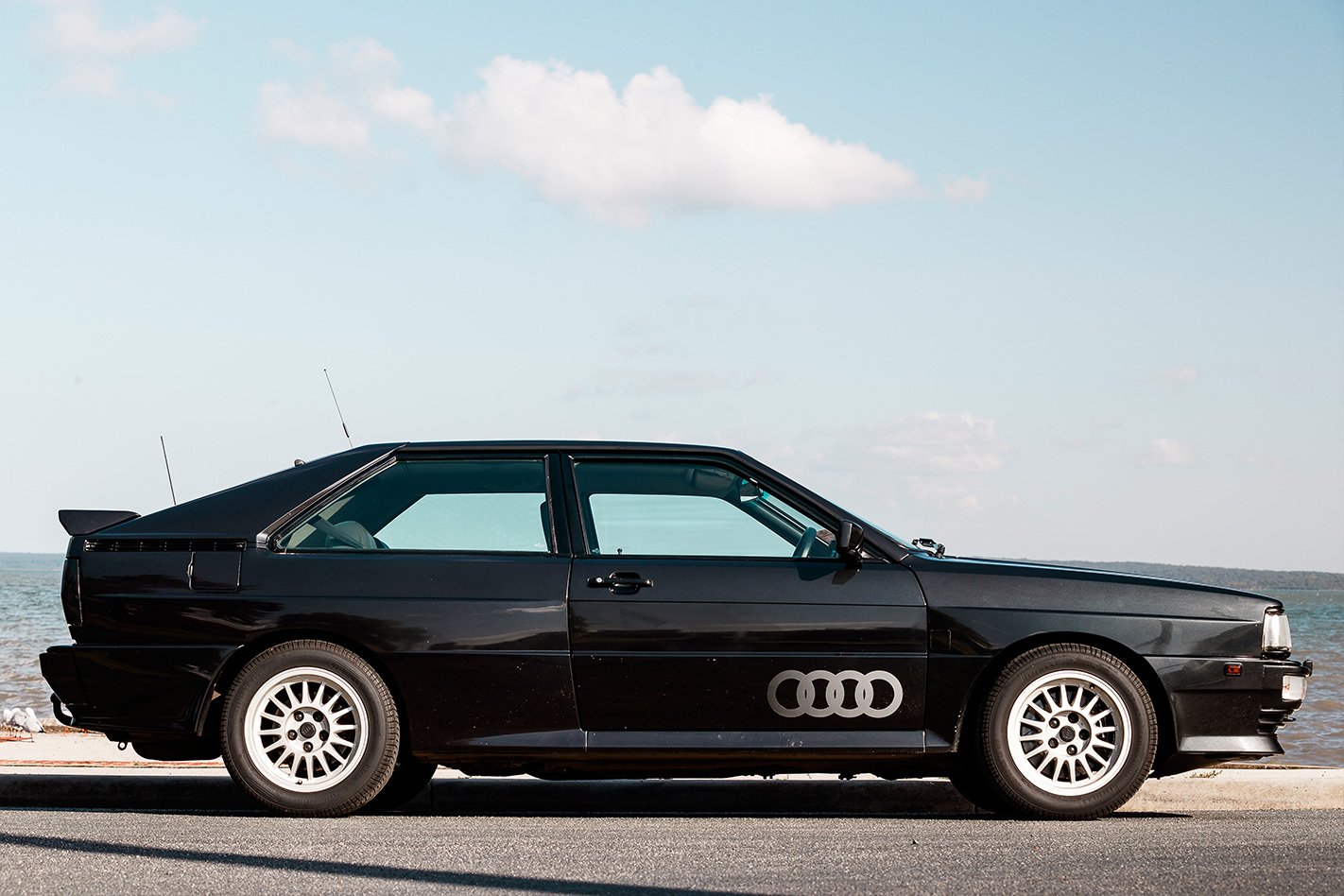
It’s been a quarter of a century since I was last behind the wheel of one of these and the sensations come flooding back. It’s that Proustian moment, where the smells hurtle to the limbic system, whacking the amygdala and the hippocampus like a pinata, those regions related to emotion and memory. I’m transported back to my early twenties, to the quattro that lived under a bush at the end of my garden in Guildford.
Audi Sport Quattro driven in the Alps
On the road, there are certain elements of the quattro’s DNA that have resisted the ageing process well. It rides with a louche suppleness, helped by some fairly generous sidewall and a more modern Koni dampers. The manual gearchange has a well-oiled feel and the steering, while a little light and approximate around the straight ahead, weights up nicely in corners. The engine pulls from 2000rpm cleanly, without a huge amount of lag, and replicates the rangy cadence of the suspension travel. Everything just takes a moment, but requires very little effort to cover ground quickly and comfortably. The brake requires a fair hoof to effect change, and likewise the clutch only gets to work in the last quarter of its arc, but these are characteristics you quickly key into.
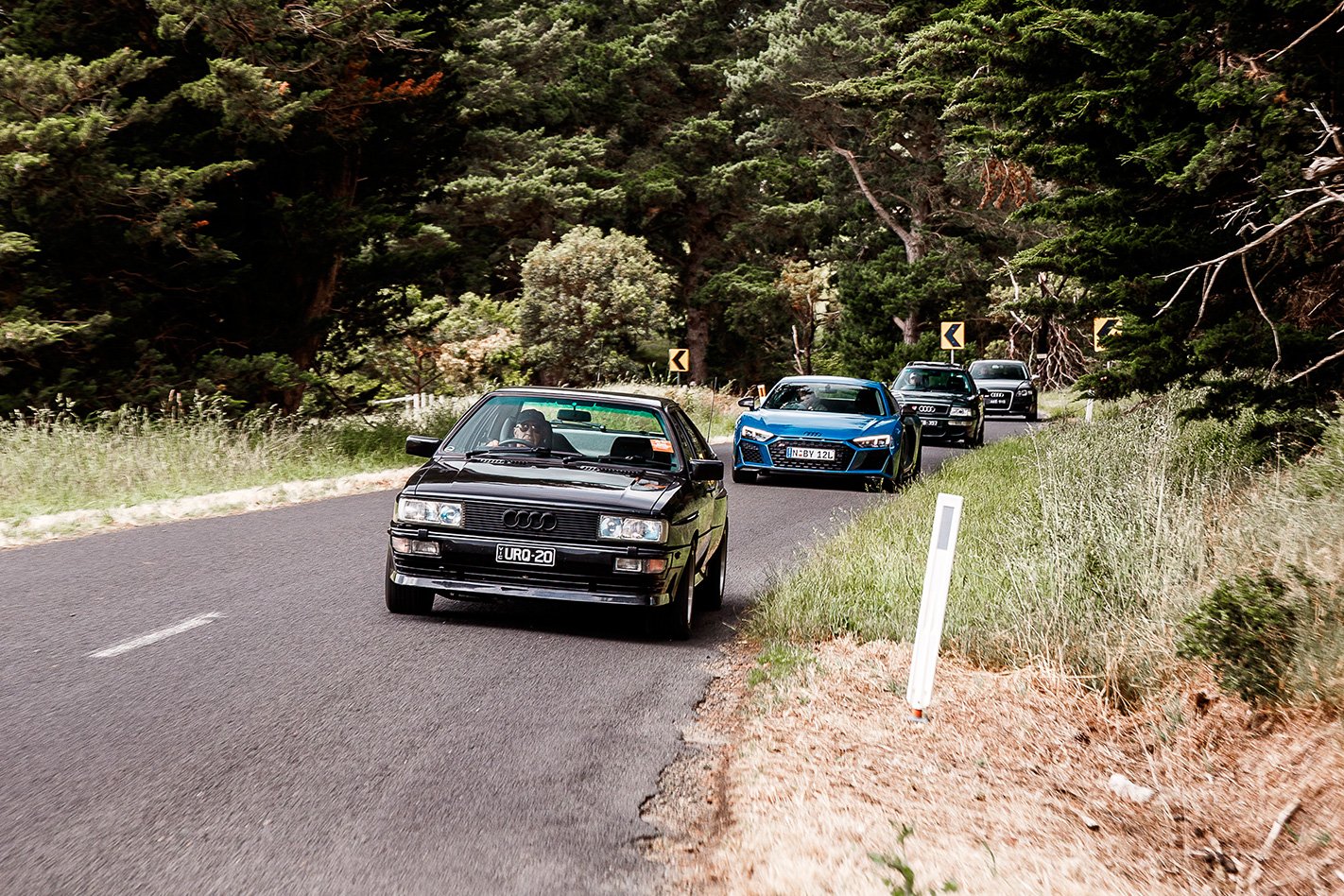
This is a very good ur-quattro and a delight to drive, but it’s nevertheless a stark reminder of how things have progressed, not just in terms of raw pace, but also in immediacy of response. As we move to our next photo location I watch the ur-quattro roll, settle and squat out of corners, with the next vehicle in our procession, the RS2 Avant behind it. Three years separate these models, but it seems as if evolution has jumped a full generation. In those 36 months, Audi’s flagship sports car went from 162 to 232kW, a massive 43 per cent increase. Due to the RS2 Avant’s rather porcine 1595kg kerb weight, however, the power-to-weight figure only ticked up by 26 per cent. Some 24 per cent was shaved from the 20v’s 0-100km/h time though, dropping the ur-quattro’s 6.3 second sprint to just 4.8 seconds.
It would take the introduction of the R8 V10, some 15 years later, to realise an equivalent step-change in acceleration over the RS2. No wonder it created such a splash at the time. It needed to. The ur-quattro’s immediate coupe successor, the S2, didn’t move the meter in terms of performance, and sold poorly as a result. History has since looked upon the S2 a little more benevolently, but Audi knew that the legendary ur-quattro had the propensity to haunt it, much as the E-Type had for decades at Jaguar, representing a benchmark none of their best efforts could measure up against.
So Audi didn’t just try to better the ur-quattro with the RS2. It looked to exorcise it. Capacity had opened at Porsche’s Rössle-Bau plant with the end of the Mercedes-Benz 500E joint venture, and RS2 Avant production began in 1994. Only 180 right-hook cars were ever built of the total 2891 production run through to 1995 and none officially came to Australia. Audi importer Inchcape had planned to bring 25 right-hand-drive RS2s to Australia at $145,000 each, but the plan fell over. But why a wagon? Ferdinand Piëch, an engineer to his bones, appreciated that the five-door chassis, largely for load bay packaging reasons, had ditched the old strut rear suspension and fitted it with a ‘proper’ double wishbone set-up. That lent itself to a ultra-high performance application.
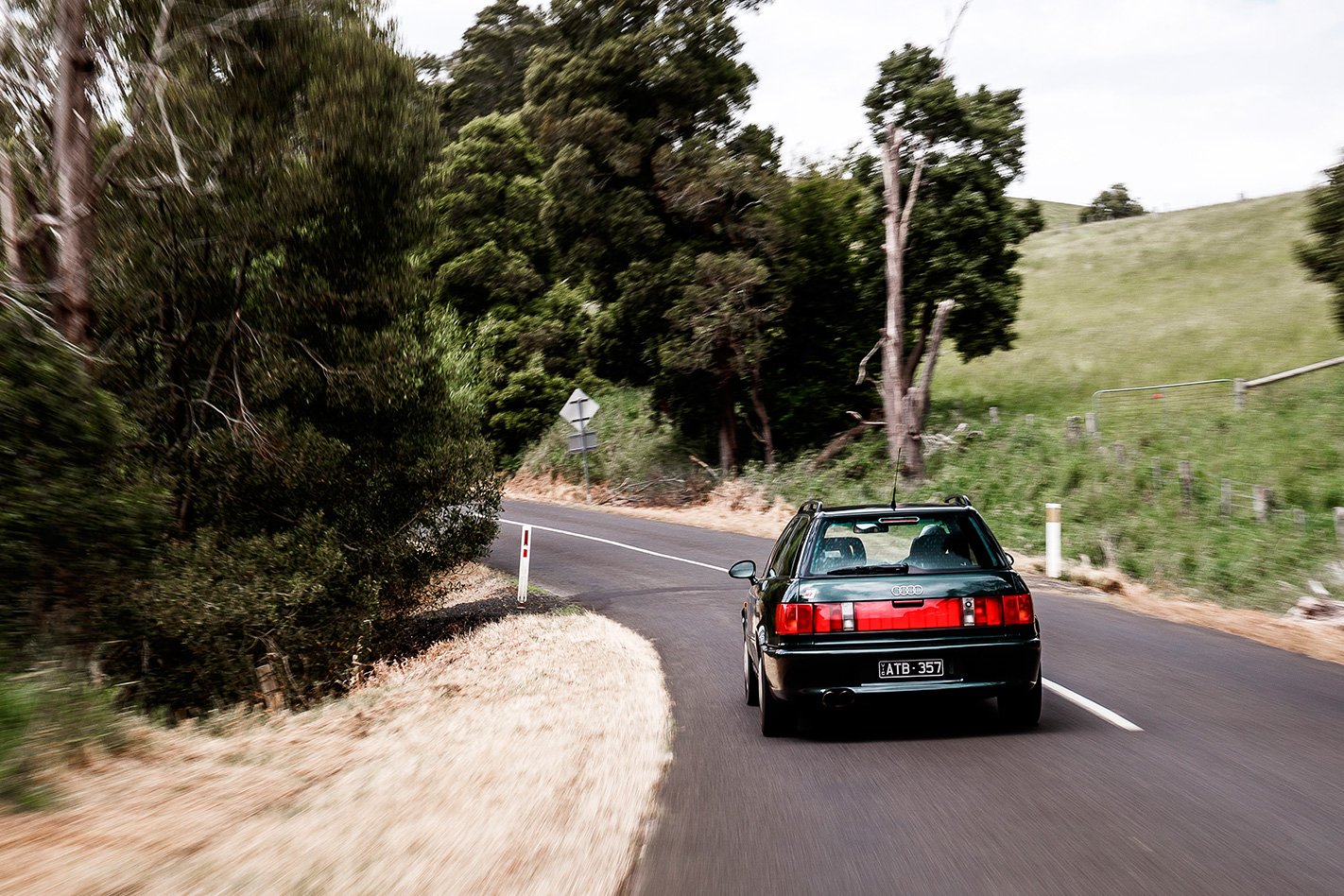
Piëch also knew that to get Porsche’s sign-off it couldn’t compete with the 911, so a high-end sports coupe was out of the question. Finished in unprepossessing Ragusa green metallic, it’s easy to underestimate this RS2. Get closer and you clock the Porsche imprimatur on the boot badge, on the steering wheel, on the Brembo brake calipers and the cam covers. The RS2 also features Porsche mirrors, front lamps, fuel pump and wheels although if you really want to appear clued-in, you could point out that the wheels feature a marginally different internal diameter for the hole in the middle compared to the Porsche 993’s alloys.
The Audi RS2 was a Porsche-developed wagon that slayed supercars
The white-clocked dash is a lot more conventional than the quattro 20v’s LED dial pack. Journos would have been doubtless waxing on in 1994 about its hewn from granite feel, but it feels one of Audi’s more transitional interior design languages. However, it features Recaro seats faced with Alcantara, carbon-fibre fillets in the dash and the best steering wheel of any of the cars here. The driver’s seat position is fairly high, and the skinny, stand-up windscreen pillars feel of the era.
The massive KKK turbocharger also requires a lot of provoking before it does its party trick. It’s worth the wait, though. The body control is a little languid, but the steering has decent heft to it. Above all else, it feels that the RS2 represents a moment when powertrain development left chassis technology flailing in its wake. The engine remained a 2226cc five-pot, but there’s something shocking in its sheer relentlessness anywhere between 3500 and 7200rpm. Even by today’s standards it feels a bit of a monster and because you need to rev the thing to keep it happy, you tend to find yourself travelling everywhere around 20 per cent quicker than is probably advisable.
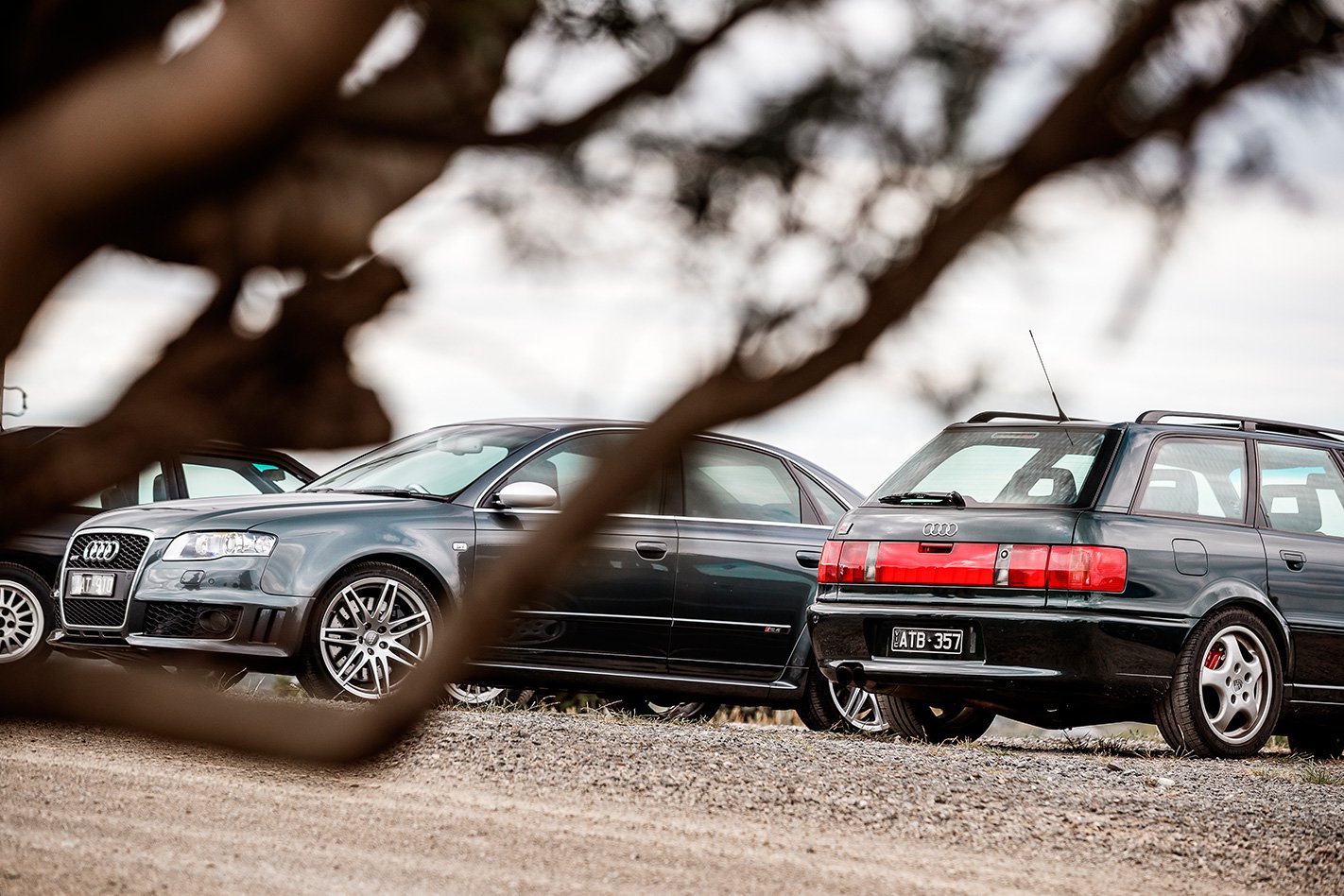
The RS2’s Torsen diff normally divides torque 75:25 front to rear but can reverse that ratio when required. Punch hard out of a tighter corner and you’ll hear a faint thud from the rear as it picks up the lion’s share of torque deployment duties. The suspension patters unhappily over mid-corner imperfections, but you get the impression that it’s fighting a losing battle against the twin demands of the powertrain and the chassis’ modulus of rigidity. Nevertheless, the RS2 feels purposeful and wieldy on the Gippsland test route. There is something a little prescriptive to the way it tackles a road. It certainly wants you to bend to its will rather than vice versa, but it’s a hugely charismatic thing and more than deserving of its place in this canon of greats. It did more than any other to establish Audi’s uberwagon bona fides and also cemented Audi’s RennSport sub-brand as something to be taken seriously.
Had you never driven any of these cars, I’d be prepared to bet the B7 RS4 is the car you’d jump into last. By the standards of the others, it’s not particularly rare and, given that it was built between 2005 and 2008, it sits in that strange hinterland of faded favourites that haven’t been burnished to classic status just yet. There were a number of contenders that could have made the cut as the Noughties Audi of choice, so why the RS4? Perspective is key here, and that perspective came in the shape of BMW’s M3, a car that had always had the measure of the equivalent fast Audi, whether that was an E36 M3 versus the S2 Coupe or the later E46 M3 putting the B6 S4 in its place. But when the B7 RS4 arrived in 2006, it was quicker than the E46 M3. What’s more, its 309kW power output was equal to the next-gen E90 M3, which appeared in 2007. BMW even found its 4.0-litre V8 a hefty 30Nm down on Ingolstadt’s 4.2-litre eight-pot. Therefore, this was a game changer; the car that demonstrated that Audi genuinely could build a class-leading contemporary performance sedan.

Twelve years had rolled by between RS2 and B7 RS4, and it shows. The cabin has spawned a central screen and steering wheel-mounted controls, while xenon lights, satellite navigation, acoustic parking sensors and a Bose stereo also help make the RS4 a more civilised place to be. The wraparound Recaro wingback seats are delightfully over the top, although you soon learn that the cushion’s side bolsters are utterly unyielding. Having driven RS4s extensively, I’m intrigued to watch the reactions of those who have never sampled one. Road Test Editor Newman’s face is a combination of glee and confusion as to how unexpectedly joyous the RS4 is to pedal hard on challenging roads. “This is something else,” he enthuses. “The engine just keeps going. It feels unburstable. I’ve always loved the E92 M3, but this…” His voice trails off and he just shakes his head, grinning.
We often talk of surprise and delight in cars, and it’s usually some twee detail like the umbrella in a Skoda or the pedals in a Twingo with pause, stop and play icons on them. The surprise and delight item in the Audi RS4 is the engine. To say it dominates proceedings suggest that it’s somehow out of kilter with the rest of the package but there’s something otherworldly about the way that it pulls so cleanly, making 90 per cent of its peak torque from just 2250rpm and staying above 90 per cent all the way to 7600rpm. That’s a 5350rpm-wide band where the RS4 always has instant go. That means you don’t need to worry the transmission too much, but you will anyway. The six-speed Getrag ’box has the most perfect springing across the gate, so you find yourself buzzing up and down gears just for the fun of it. In contrast to Audi’s earlier efforts, there’s a nuanced consistency of control weights. The RS4 feels modern, despite being 15 years old now, and for many it resides in a serendipitous spot where we had great engines, adaptive suspension and decent safety systems, but backed that up with classic features like hydraulically assisted power steering and the availability of a V8 engine and manual gearbox combination.
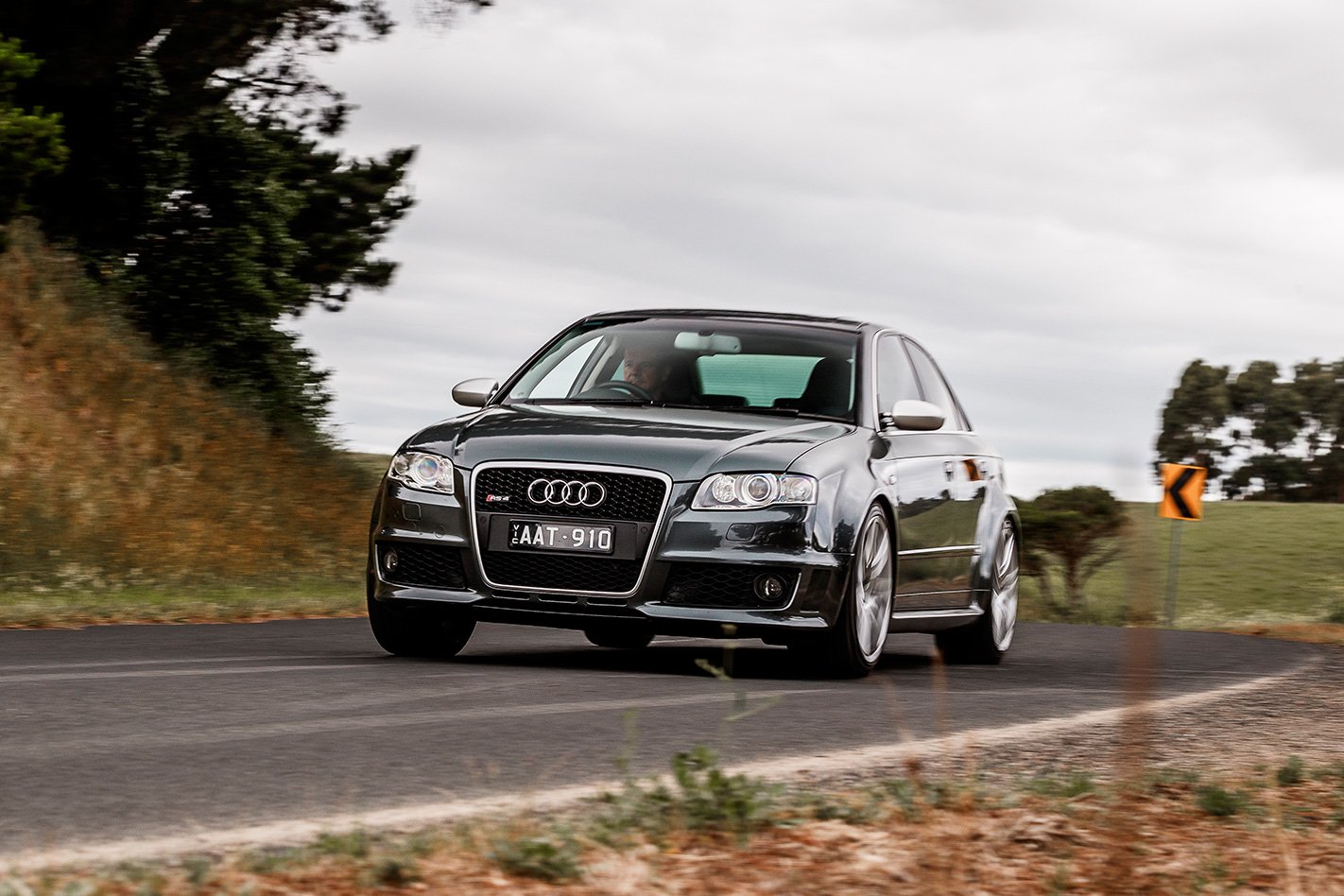
The RS4 was also the first of the quattro models to move away from a nominal 50:50 torque split, the Torsen T3 ATB centre diff directing 60 per cent of power rearwards in normal driving conditions and tweaking that to 85 per cent when required. Deploying that power early is helped by decent steering and a measure of body control that, at the time was revolutionary. While many Audis had been hampered by managing the masses of a heavy nose, the RS4 featured the DRC system, which diagonally linked the dampers via hydraulics, firming up the damper which needs support most and relieving the one that needed it least. Sadly, it wasn’t the most durable system and rather than fix leaking units, many owners replace them with more conventional alternative, like an RS4-specific Variant3 option from KW.
Which brings us to the last of the four, the R8. Representing the last of the four decades of quattro, it’s the latest and greatest R8 V10 Performance model. It’s $395,000 list or $395,700 as-tested, with all badging finished in black the only option. The Ascari blue paint, gloss carbon sideblades and black interior with rock grey stitching has clearly been specified by somebody with far better taste than me. There’s a neat symmetry to the R8’s cabin which, like the quattro 20v, features LEDs rather than analogue clocks, with a screenless centre console dominated by the ventilation controls. The all-wheel drive system is the obvious genome running through all of these cars, but the most surprising thing about them is just how different they are, and there’s an irony there if you go looking for it.
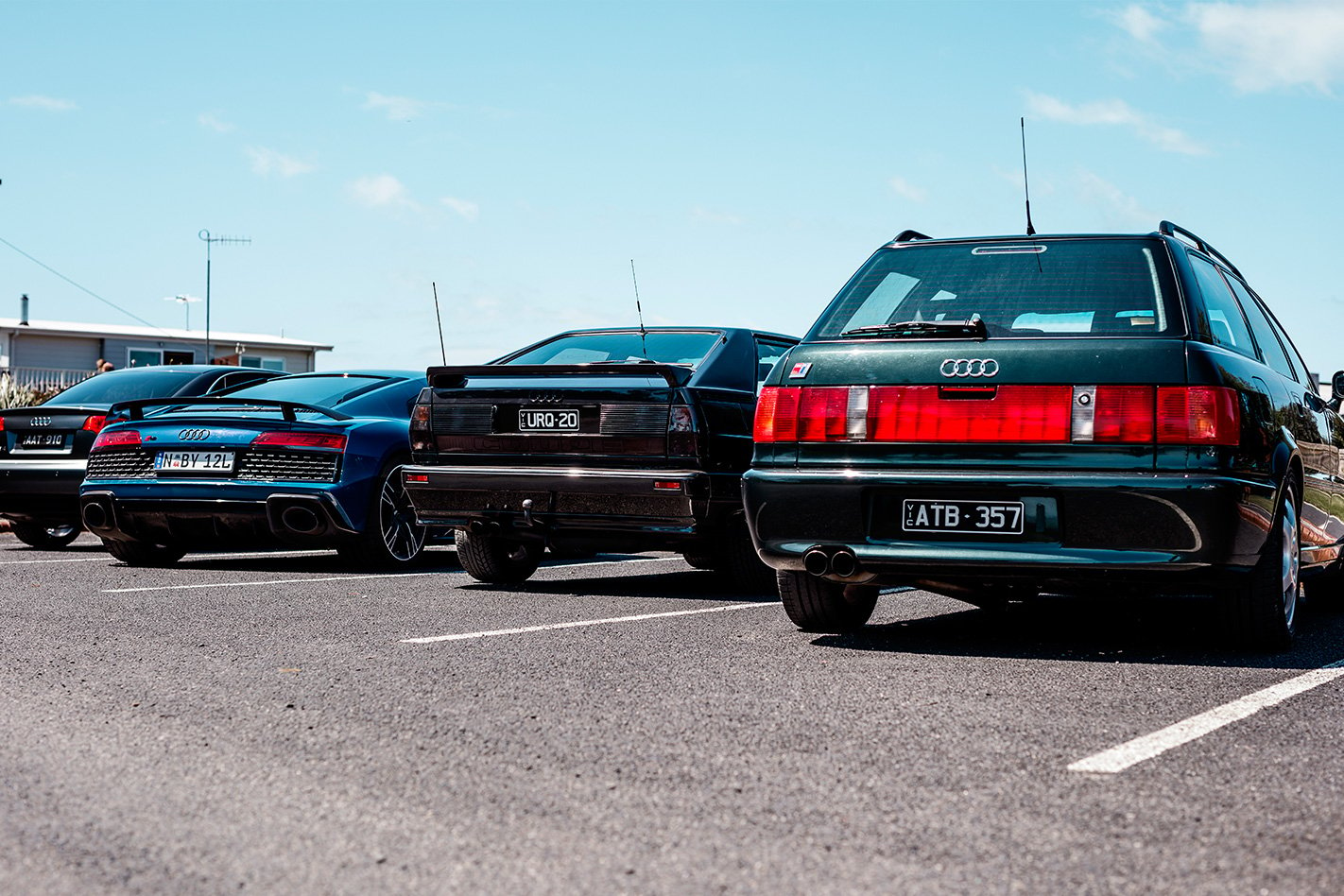
A coupe, a wagon, a sedan and a mid-engined supercar demonstrate just how versatile a fundamentally good idea can be. It’s also apt that, in a celebration of all things quattro, that the drive system beneath each of these cars should be so low key. As is so often the case, the more competent some things are, the less you notice them. Traction deployment is a virtual non-issue with any of this quartet. Even the R8, with 449kW arriving at 8250rpm, is putting only a handful more kilowatts to the road surface per driven contact patch than a base Boxster. It might be approaching then end of its life, but there’s still something a little heady about a German junior supercar with undertones of Lamborghini.
The R8 reminds me of the BMW M1 in that regard; a joyously disorienting blend of rectitude and recklessness. The V10 sounds as angry as ever, but this latest car gets more leather in the cabin, an exterior makeover, a combination of laser and LED lighting, adaptive dampers and a carbon-wrapped front anti-roll bar. The R8 is an anomaly in one key regard here though. Audi’s quattro heritage came about partly through expediency, a pragmatic adaptation of front-drive architectures to handle more power. The R8 was never spawned from a front-drive chassis. In fact, it can be bought in rear-drive guise; the RWS version is the first Audi that sends power solely to the rear tyres in over half a century.
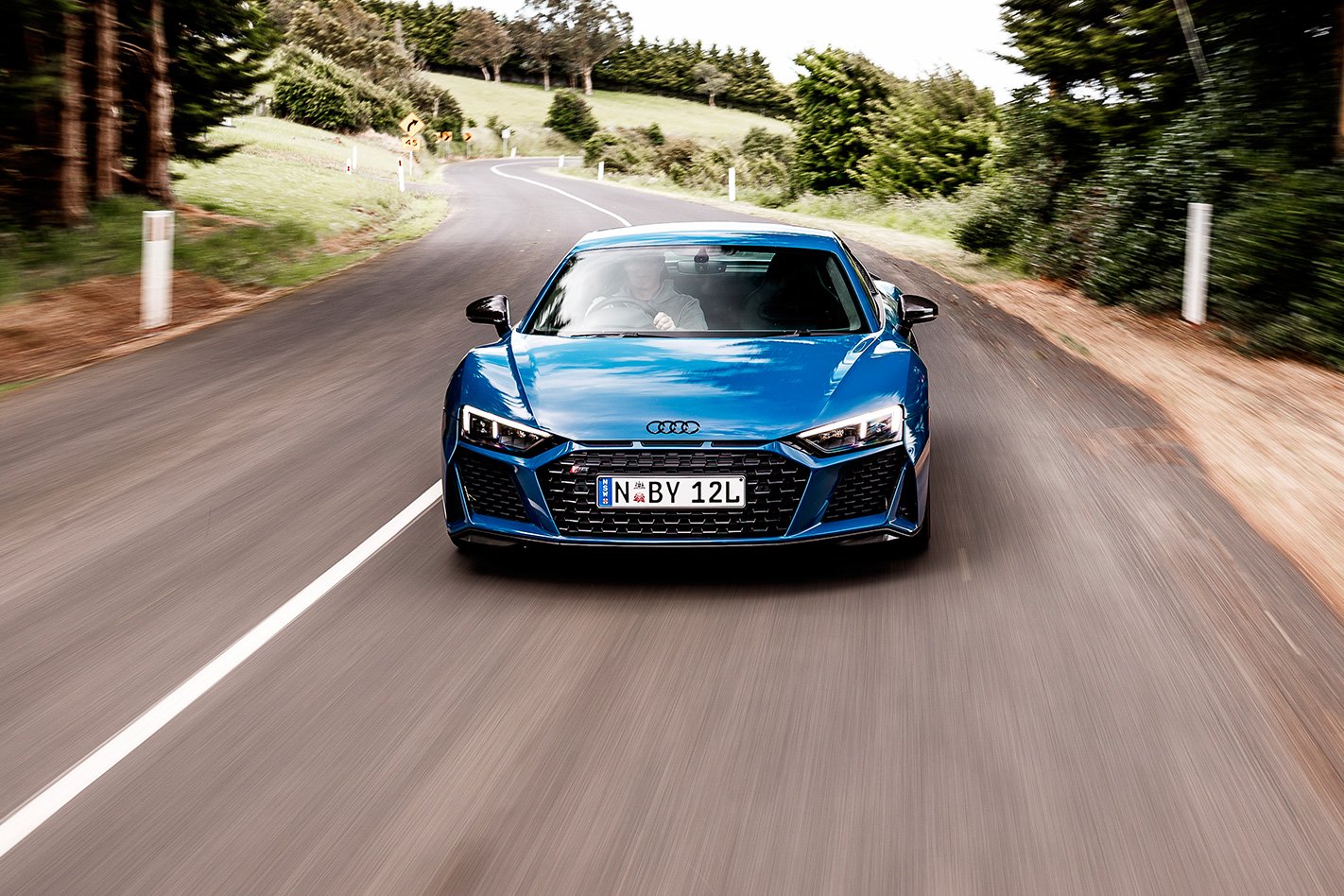
Some drivers prefer its purity. So where does that leave quattro as a concept? Sitting pretty, we’d argue. It must be vindicating for Audi to wheel out the RS6 and see its key rivals from Mercedes-AMG and BMW now fronting all-wheel drive vehicles against it. And while there might be a debate about whether you prefer drive going to each corner in an R8, this car is a farewell of sorts. The future isn’t going to have a 10-cylinder petrol engine sitting over your left shoulder. There are a number of great imponderables as to what form that future is going to take, but if you’re Audi, quattro is a non-negotiable.
These cars may be the four cornerstones of four decades of four-wheel drive, but the next decade could well be defined by something no less exciting. Will we see four more decades of quattro? I, for one, wouldn’t bet against it.
Many thanks to owners Richard Townley, Ashley Pedler and Shaphieh Esharc for their time and assistance.


